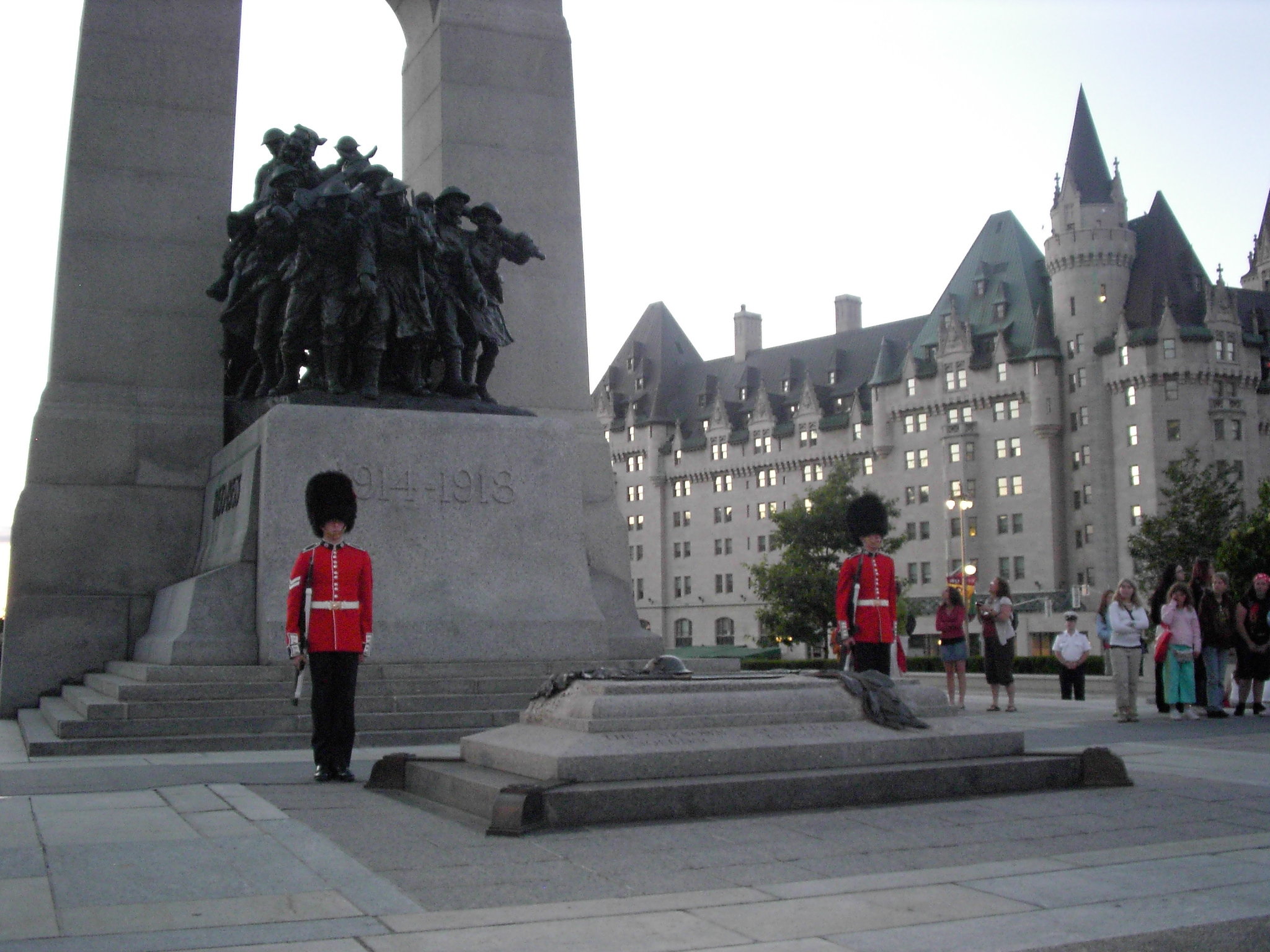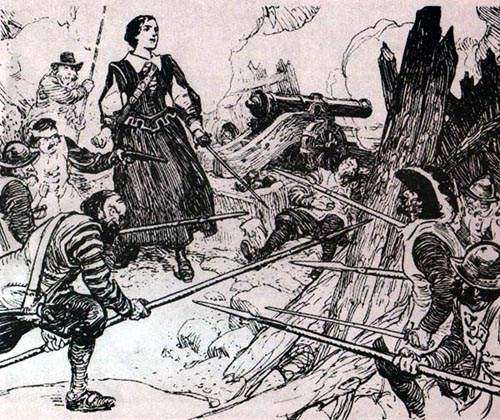|
Raid On Salmon Falls
The Raid on Salmon Falls (March 27, 1690) involved Joseph-François Hertel de la Fresnière (and his son Jean-Baptiste Hertel de Rouville), along with Norridgewock Abnaki chief Wahowa, and possibly Maliseet Abnaki war chief Assacumbuit, leading his troops as well as the Wabanaki Confederacy (Mi'kmaq and Maliseet from Fort Meductic) in New Brunswick to capture and destroy an English settlement of Salmon Falls (present-day Berwick, Maine) during King William's War. Raid The village was destroyed, and most of its residents were killed or taken prisoner for transport back to Canada. They killed thirty-four men and carried away captive fifty-four persons, mostly women and children, and plundered and burnt the houses and mills. Militia mustered from Portsmouth and gave chase, but were driven off in a skirmish later that day. Hertel then continued to raid present-day Portland, Maine. The attackers' original intent was to target the home of Edward Tyng, father of Edward Tyng, at For ... [...More Info...] [...Related Items...] OR: [Wikipedia] [Google] [Baidu] |
Jean-Baptiste Hertel De Rouville
Jean-Baptiste Hertel de Rouville (26 October 1668 – 30 June 1722) was a colonial military officer of New France in the French Marines in Canada. He is best known in North America for leading the raid on Deerfield, in western Province of Massachusetts Bay, against English settlers on 29 February 1704 during Queen Anne's War. Retrieved 13 November 2022. A dedicated soldier, he was widely reviled by the settlers of New England for his tactics of raiding poorly defended frontier settlements. During the years of this war, he also participated in military operations against the English in Newfoundland. He played a role in the early settlement of Île-Royale (present-day Cape Breton Island), after that war. King William's War Hertel de Rouville was born in 1668 into a military family in Trois-Rivières, in the colony of Canada, New France. He was the third son of Joseph-François Hertel de la Fresnière (1642—1722), also born in Trois-Rivières, and his wife. Active in the Fr ... [...More Info...] [...Related Items...] OR: [Wikipedia] [Google] [Baidu] |
Canada, New France
The colony of Canada was a French colony within the larger territory of New France. It was claimed by France in 1535 during the second voyage of Jacques Cartier, in the name of the French king, Francis I. The colony remained a French territory until 1763, when it became a British colony known as the Province of Quebec. In the 16th century the word "Canada" could refer to the territory along the Saint Lawrence River (then known as the Canada River) from Grosse Isle to a point between Québec and Trois-Rivières. The terms "Canada" and "New France" were also used interchangeably. French explorations continued west "unto the Countreys of Canada, Hochelaga, and Saguenay" before any permanent settlements were established. In 1600 a permanent trading post and habitation was established at Tadoussac at the confluence of the Saguenay and Saint Lawrence rivers. However, because this trading post was under a trade monopoly, it was not constituted as an official French colonial set ... [...More Info...] [...Related Items...] OR: [Wikipedia] [Google] [Baidu] |
Conflicts In 1690
Conflict may refer to: Arts, entertainment, and media Films * ''Conflict'' (1921 film), an American silent film directed by Stuart Paton * ''Conflict'' (1936 film), an American boxing film starring John Wayne * ''Conflict'' (1937 film), a Swedish drama film directed by Per-Axel Branner * ''Conflict'' (1938 film), a French drama film directed by Léonide Moguy * ''Conflict'' (1945 film), an American suspense film starring Humphrey Bogart * ''Catholics: A Fable'' (1973 film), or ''The Conflict'', a film starring Martin Sheen * ''Judith'' (1966 film) or ''Conflict'', a film starring Sophia Loren * ''Samar'' (1999 film) or ''Conflict'', a 1999 Indian film by Shyam Benegal Games * ''Conflict'' (series), a 2002–2008 series of war games for the PS2, Xbox, and PC * ''Conflict'' (video game), a 1989 Nintendo Entertainment System war game * '' Conflict: Middle East Political Simulator'', a 1990 strategy computer game Literature and periodicals * ''Conflict'' (novel) ... [...More Info...] [...Related Items...] OR: [Wikipedia] [Google] [Baidu] |
Military History Of Canada
The military history of Canada comprises hundreds of years of armed actions in the territory encompassing modern Canada, and interventions by the Canadian Forces, Canadian military in conflicts and peacekeeping worldwide. For thousands of years, the area that would become Canada was the site of sporadic intertribal conflicts among Aboriginal peoples in Canada, Aboriginal peoples. Beginning in the 17th and 18th centuries, Canada was the site of French and Indian Wars, four colonial wars and two additional wars in Nova Scotia and Acadia between New France and New England; the conflicts spanned almost seventy years, as each allied with various First Nation groups. In 1763, after the final colonial war—the Seven Years' War—the British emerged victorious and the French civilians, whom the British hoped to assimilate, were declared "British Subjects". After the passing of the Quebec Act in 1774, giving the Canadians, Canadians their first charter of rights under the new regime, the B ... [...More Info...] [...Related Items...] OR: [Wikipedia] [Google] [Baidu] |
Military History Of New England
A military, also known collectively as armed forces, is a heavily armed, highly organized force primarily intended for warfare. It is typically authorized and maintained by a sovereign state, with its members identifiable by their distinct military uniform. It may consist of one or more military branches such as an army, navy, air force, space force, marines, or coast guard. The main task of the military is usually defined as defence of the state and its interests against external armed threats. In broad usage, the terms ''armed forces'' and ''military'' are often treated as synonymous, although in technical usage a distinction is sometimes made in which a country's armed forces may include both its military and other paramilitary forces. There are various forms of irregular military forces, not belonging to a recognized state; though they share many attributes with regular military forces, they are less often referred to as simply ''military''. A nation's military may f ... [...More Info...] [...Related Items...] OR: [Wikipedia] [Google] [Baidu] |
Military History Of Nova Scotia
Nova Scotia (also known as Mi'kma'ki and Acadia) is a Canadian province located in Canada's Maritimes. The region was initially occupied by Mi'kmaq. The colonial history of Nova Scotia includes the present-day Canadian Maritime provinces and the northern part of Maine ( Sunbury County, Nova Scotia), all of which were at one time part of Nova Scotia. In 1763 Cape Breton Island and St. John's Island (now Prince Edward Island) became part of Nova Scotia. In 1769, St. John's Island became a separate colony. Nova Scotia included present-day New Brunswick until that province was established in 1784. (In 1765, the county of Sunbury was created, and included the territory of present-day New Brunswick and eastern Maine as far as the Penobscot River.) During the first 150 years of European settlement, the colony was primarily made up of Catholic Acadians, Maliseet and Mi'kmaq. During the latter seventy-five years of this time period, there were six colonial wars that took place in Nova Sc ... [...More Info...] [...Related Items...] OR: [Wikipedia] [Google] [Baidu] |
Military History Of Acadia
A military, also known collectively as armed forces, is a heavily armed, highly organized force primarily intended for warfare. It is typically authorized and maintained by a sovereign state, with its members identifiable by their distinct military uniform. It may consist of one or more military branches such as an army, navy, air force, space force, marines, or coast guard. The main task of the military is usually defined as defence of the state and its interests against external armed threats. In broad usage, the terms ''armed forces'' and ''military'' are often treated as synonymous, although in technical usage a distinction is sometimes made in which a country's armed forces may include both its military and other paramilitary forces. There are various forms of irregular military forces, not belonging to a recognized state; though they share many attributes with regular military forces, they are less often referred to as simply ''military''. A nation's military ma ... [...More Info...] [...Related Items...] OR: [Wikipedia] [Google] [Baidu] |
Military History Of The Mi’kmaq Warriors
A military, also known collectively as armed forces, is a heavily armed, highly organized force primarily intended for warfare. It is typically authorized and maintained by a sovereign state, with its members identifiable by their distinct military uniform. It may consist of one or more military branches such as an army, navy, air force, space force, marines, or coast guard. The main task of the military is usually defined as defence of the state and its interests against external armed threats. In broad usage, the terms ''armed forces'' and ''military'' are often treated as synonymous, although in technical usage a distinction is sometimes made in which a country's armed forces may include both its military and other paramilitary forces. There are various forms of irregular military forces, not belonging to a recognized state; though they share many attributes with regular military forces, they are less often referred to as simply ''military''. A nation's military may f ... [...More Info...] [...Related Items...] OR: [Wikipedia] [Google] [Baidu] |
Fort Loyal
Fort Loyal was a British settler refuge and colonial outpost built in 1678 at Falmouth (present-day Portland, Maine) in Casco Bay. It was destroyed in 1690 by Abenaki and French forces at the Battle of Fort Loyal. The fort was rebuilt in 1742 and renamed Falmouth Fort before King George's War and rearmed again in 1755 for the French and Indian War. The fort was rebuilt a final time in 1775 for the American Revolution. The peninsula was first colonized by the English in 1632 as a fishing and trading village named Casco. When the Massachusetts Bay Colony absorbed the Province of Maine in 1658, the town's name changed to Falmouth. In 1676, the village was destroyed by the Abenaki during King Philip's War. English colonists returned two years later when peace resumed. Fort Loyal was built in 1678 in the center of Portland at the foot of present-day India Street to protect the town from future attacks. In 1690 Fort Loyal consisted of four wooden blockhouses and eight guns. During King ... [...More Info...] [...Related Items...] OR: [Wikipedia] [Google] [Baidu] |
Edward Tyng (military Officer)
Edward Tyng (ca. 1649 - ca. 1691) was a leading military officer in Maine and was appointed Governor of Acadia during King William's War. He was the commander of Fort Loyal, 1681–82 and 1686–87.C. Bruce Fergusson, “TYNG, EDWARD (fl. 1680-91),” in ''Dictionary of Canadian Biography,'' vol. 1, University of Toronto/Université Laval, 2003–, accessed July 9, 2022 In the , the attackers' original intent was to target the home of Edward Tyng, father of |
Battle Of Fort Loyal
The Battle of Falmouth (also known as the Battle of Fort Loyal) (May 16–20, 1690) involved Joseph-François Hertel de la Fresnière and Baron de St Castin leading troops as well as the Wabanaki Confederacy (Mi'kmaq and Maliseet from Fort Meductic) in New Brunswick to capture and destroy Fort Loyal and the English settlement on the Falmouth neck (site of present-day Portland, Maine), then part of the Massachusetts Bay Colony. The commander of the fort was Captain Sylvanus Davis. After two days of siege, the settlement's fort, called Fort Loyal (sometimes spelled "Loyall"), surrendered. The community's buildings were burned, including the wooden stockade fort, and its people were either killed or taken prisoner. The fall of Fort Loyal (Casco) led to the near depopulation of Europeans in Maine. Native forces were then able to attack the New Hampshire frontier without reprisal. Historical context The earliest garrison at Falmouth was Fort Loyal (1678) in what was then the ce ... [...More Info...] [...Related Items...] OR: [Wikipedia] [Google] [Baidu] |
_A_new_and_accurate_map_of_the_English_empire_in_North_America%2C_1755.png)



